AR
-
 KAIST College of Life Sciences and Bioengineering Signs MOU with Harvard
KAIST’s College of Life Sciences and Bioengineering recently signed a memorandum of understanding (MOU) with Harvard University’s Center for Brain Science on July 20, which will allow for joint research and exchange in researchers between the two institutions.
Headed by Director Kenneth Blum, Harvard’s Center for Brain Science leads the world in brain-related research. The new MOU will allow for research cooperation, exchanges of professors, researchers, and students, joint usage of infrastructure and research materials, and finally, sharing of research assignments.
The Dean of the College of Life Sciences and Bioengineering Sang Yup Lee, who concerted efforts to form the MOU said, “This agreement will bring together two of the world’s leading brain-related research teams, and I hope that combining their expertise will bring great advances in brain science and engineering.
KAIST’s College of Life Science and Bioengineering, which is known for its creative interdisciplinary research, is producing exemplary research results in the field of brain science from its Biological Sciences and Bio and Brain Engineering departments.
In addition to cooperation with Harvard, KAIST has also formed partnerships with Emory University, Japan’s RIKEN Brain Institute, and Germany’s Max Planck Institute. Not only does it have a worldwide network pertaining to brain research, but KAIST has also engaged in cooperative research with prominent domestic institutions such as, Asan Medical Center, the Korea Research Institute of Bioscience and Biotechnology, the Korea Research Institute of Standards and Science, and the SK Corporation. Through these connections, KAIST has managed to lead in mutually cooperative brain interdisciplinary research.
2009.08.10 View 16713
KAIST College of Life Sciences and Bioengineering Signs MOU with Harvard
KAIST’s College of Life Sciences and Bioengineering recently signed a memorandum of understanding (MOU) with Harvard University’s Center for Brain Science on July 20, which will allow for joint research and exchange in researchers between the two institutions.
Headed by Director Kenneth Blum, Harvard’s Center for Brain Science leads the world in brain-related research. The new MOU will allow for research cooperation, exchanges of professors, researchers, and students, joint usage of infrastructure and research materials, and finally, sharing of research assignments.
The Dean of the College of Life Sciences and Bioengineering Sang Yup Lee, who concerted efforts to form the MOU said, “This agreement will bring together two of the world’s leading brain-related research teams, and I hope that combining their expertise will bring great advances in brain science and engineering.
KAIST’s College of Life Science and Bioengineering, which is known for its creative interdisciplinary research, is producing exemplary research results in the field of brain science from its Biological Sciences and Bio and Brain Engineering departments.
In addition to cooperation with Harvard, KAIST has also formed partnerships with Emory University, Japan’s RIKEN Brain Institute, and Germany’s Max Planck Institute. Not only does it have a worldwide network pertaining to brain research, but KAIST has also engaged in cooperative research with prominent domestic institutions such as, Asan Medical Center, the Korea Research Institute of Bioscience and Biotechnology, the Korea Research Institute of Standards and Science, and the SK Corporation. Through these connections, KAIST has managed to lead in mutually cooperative brain interdisciplinary research.
2009.08.10 View 16713 -
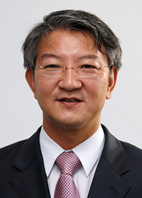 KAIST Professor Sang-Yup Lee Chair of International Metabolic Engineering Conference Due Next Year
KAIST distinguished professor Sang-Yup Lee was named to chair the 17th Metabolic Engineering Conference which will convene on Jeju Island, Korea, next year, under the theme of "Metabolic Engineering for Green Growth." It was decided at the 16th Biochemical Engineering Conference held in Burlington, Vermont, on July 5-9.
Metabolic Engineering Conference in 2010 will not only involve presentations and discussions about metabolic engineering, but will inaugurate the “World Council on Industrial Biotechnology,” which will bring together global corporations and the world’s experts in industrial biochemical engineering, according to sources at KAIST.
A KAIST official commented, “The fact that the Metabolic Engineering Conference is to be held here [in Korea] proves that Korea is being acknowledged as a key player in this field.”
As the world faces the depletion of fossil fuels and environmental pollution, nations are showing increasing interest in industrial biochemical alternatives, such as microscopic organisms or new chemicals, to solve their problems. In addition, efficient production of biochemical materials and bio-fuels using microbes is deemed vital for the future.
“The Korean government has become a model to other countries thanks to its leadership in carrying out the ‘Green Growth’ policy,” Professor Sang-Yup Lee said. He stated that KAIST is recognized for its research in advanced biochemical material and fuel production methods.
“Green Growth,” a concept first developed by ESCAP, the UN agency working for social and economic cooperation in Asia and the Pacific, aims to achieve sustainable economic growth without destroying the environment.
Ref. Department of Biochemical Engineering, Metabolic and BioMolecular Engineering Lab, KAIST
2009.07.17 View 13789
KAIST Professor Sang-Yup Lee Chair of International Metabolic Engineering Conference Due Next Year
KAIST distinguished professor Sang-Yup Lee was named to chair the 17th Metabolic Engineering Conference which will convene on Jeju Island, Korea, next year, under the theme of "Metabolic Engineering for Green Growth." It was decided at the 16th Biochemical Engineering Conference held in Burlington, Vermont, on July 5-9.
Metabolic Engineering Conference in 2010 will not only involve presentations and discussions about metabolic engineering, but will inaugurate the “World Council on Industrial Biotechnology,” which will bring together global corporations and the world’s experts in industrial biochemical engineering, according to sources at KAIST.
A KAIST official commented, “The fact that the Metabolic Engineering Conference is to be held here [in Korea] proves that Korea is being acknowledged as a key player in this field.”
As the world faces the depletion of fossil fuels and environmental pollution, nations are showing increasing interest in industrial biochemical alternatives, such as microscopic organisms or new chemicals, to solve their problems. In addition, efficient production of biochemical materials and bio-fuels using microbes is deemed vital for the future.
“The Korean government has become a model to other countries thanks to its leadership in carrying out the ‘Green Growth’ policy,” Professor Sang-Yup Lee said. He stated that KAIST is recognized for its research in advanced biochemical material and fuel production methods.
“Green Growth,” a concept first developed by ESCAP, the UN agency working for social and economic cooperation in Asia and the Pacific, aims to achieve sustainable economic growth without destroying the environment.
Ref. Department of Biochemical Engineering, Metabolic and BioMolecular Engineering Lab, KAIST
2009.07.17 View 13789 -
 Prof. Park to Receive HP's Annual Innovation Research Award
Prof. In-Kyu Park of the Department of Mechanical Engineering, KAIST, has been will receive an award from Hewlett-Packard"s second annual Labs Innovation Research Program, university authorities said on Wednesday (July 8).
Prof. Park was chosen as the winner of the research award for his paper entitled "Eco-friendly nanomanufacturing for intelligent environment sensing applications."
Sixty projects from 46 universities in 12 countries were selected as the recipients of the awards from HP Labs, the company"s central research arm. The program is designed to create opportunities for colleges, universities and research institutes to conduct collaborative research with HP.
HP Labs Innovation Research Awards provide project funding of up to $100,000 for one year to each of the chosen academic institutions, which is renewable for up to three years based on research progress and HP business requirements.
Prof. Park has conducted joint researches on nanoimprinting, nanosensors, and nanoelectronics with HP"s Information and Quantum Systems Lab since 2005. Starting from the later half of 2009, he is to receive research grants under the industry-academia cooperation program of the world"s information technology giant firm.
2009.07.09 View 14595
Prof. Park to Receive HP's Annual Innovation Research Award
Prof. In-Kyu Park of the Department of Mechanical Engineering, KAIST, has been will receive an award from Hewlett-Packard"s second annual Labs Innovation Research Program, university authorities said on Wednesday (July 8).
Prof. Park was chosen as the winner of the research award for his paper entitled "Eco-friendly nanomanufacturing for intelligent environment sensing applications."
Sixty projects from 46 universities in 12 countries were selected as the recipients of the awards from HP Labs, the company"s central research arm. The program is designed to create opportunities for colleges, universities and research institutes to conduct collaborative research with HP.
HP Labs Innovation Research Awards provide project funding of up to $100,000 for one year to each of the chosen academic institutions, which is renewable for up to three years based on research progress and HP business requirements.
Prof. Park has conducted joint researches on nanoimprinting, nanosensors, and nanoelectronics with HP"s Information and Quantum Systems Lab since 2005. Starting from the later half of 2009, he is to receive research grants under the industry-academia cooperation program of the world"s information technology giant firm.
2009.07.09 View 14595 -
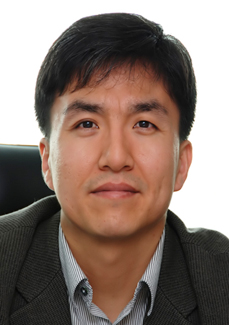 Prof. Cho Appointed Editor-in-Chief of Systems Biology Encyclopedia
Prof. Kwang-Hyun Cho of the Department of Bio and Brain Engineering, KAIST, has been appointed as the editor-in-chief of the Encyclopedia of Systems Biology which is currently in development by Springer, a New York-based publishing company, university authorities said on Monday (July 6).
Prof. Cho will share the position with three other eminent scholars from Britain, Germany and the United States. Cho will be responsible for selecting editorial members for each section of the Encyclopedia and overseeing the overall editorial process.
The Encyclopedia of Systems Biology is a multi-volume reference compilation of the research outcomes in the field of systems biology all over the world. The ESB will consist of alphabetically ordered description of systems biology concepts and is envisaged to ultimately comprise 6-12 volumes. Publication of the Encyclopedia is scheduled for 2011.
2009.07.08 View 13600
Prof. Cho Appointed Editor-in-Chief of Systems Biology Encyclopedia
Prof. Kwang-Hyun Cho of the Department of Bio and Brain Engineering, KAIST, has been appointed as the editor-in-chief of the Encyclopedia of Systems Biology which is currently in development by Springer, a New York-based publishing company, university authorities said on Monday (July 6).
Prof. Cho will share the position with three other eminent scholars from Britain, Germany and the United States. Cho will be responsible for selecting editorial members for each section of the Encyclopedia and overseeing the overall editorial process.
The Encyclopedia of Systems Biology is a multi-volume reference compilation of the research outcomes in the field of systems biology all over the world. The ESB will consist of alphabetically ordered description of systems biology concepts and is envisaged to ultimately comprise 6-12 volumes. Publication of the Encyclopedia is scheduled for 2011.
2009.07.08 View 13600 -
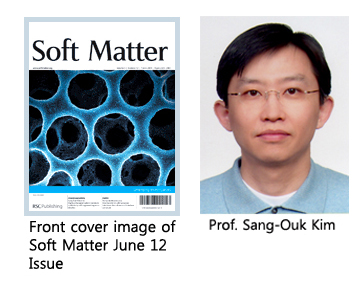 Prof. Sang-Ouk Kim Featured on the Cover of Emerging Investigator Special Issue
KAIST Prof. Sang-Ouk Kim of the Department of Materials Science and Engineering was featured on the cover of the Emerging Investigator Special Issue published by Britain"s Royal Society of Chemistry on June 21, university authorities said on Monday (June 22).
The special issue shed spotlight on 18 up-and-coming scientists who have been selected through the recommendation and rigorous screening process of the editorial and advisory boards of the Royal Society of Chemistry. The 18 scientists consist of six from the American continent, 10 from Europe, one from Japan and one from Korea.
The journal introduced Prof. Kim"s paper, titled "Highly entangled carbon nanotube (CNT) scaffolds by self-organized aqueous droplets." Kim explained in the paper that the cellular CNT demonstrated high electrical conductivity and field-emission properties, which is potentially useful for various applications in electronics and energy storage devices.
2009.06.24 View 13459
Prof. Sang-Ouk Kim Featured on the Cover of Emerging Investigator Special Issue
KAIST Prof. Sang-Ouk Kim of the Department of Materials Science and Engineering was featured on the cover of the Emerging Investigator Special Issue published by Britain"s Royal Society of Chemistry on June 21, university authorities said on Monday (June 22).
The special issue shed spotlight on 18 up-and-coming scientists who have been selected through the recommendation and rigorous screening process of the editorial and advisory boards of the Royal Society of Chemistry. The 18 scientists consist of six from the American continent, 10 from Europe, one from Japan and one from Korea.
The journal introduced Prof. Kim"s paper, titled "Highly entangled carbon nanotube (CNT) scaffolds by self-organized aqueous droplets." Kim explained in the paper that the cellular CNT demonstrated high electrical conductivity and field-emission properties, which is potentially useful for various applications in electronics and energy storage devices.
2009.06.24 View 13459 -
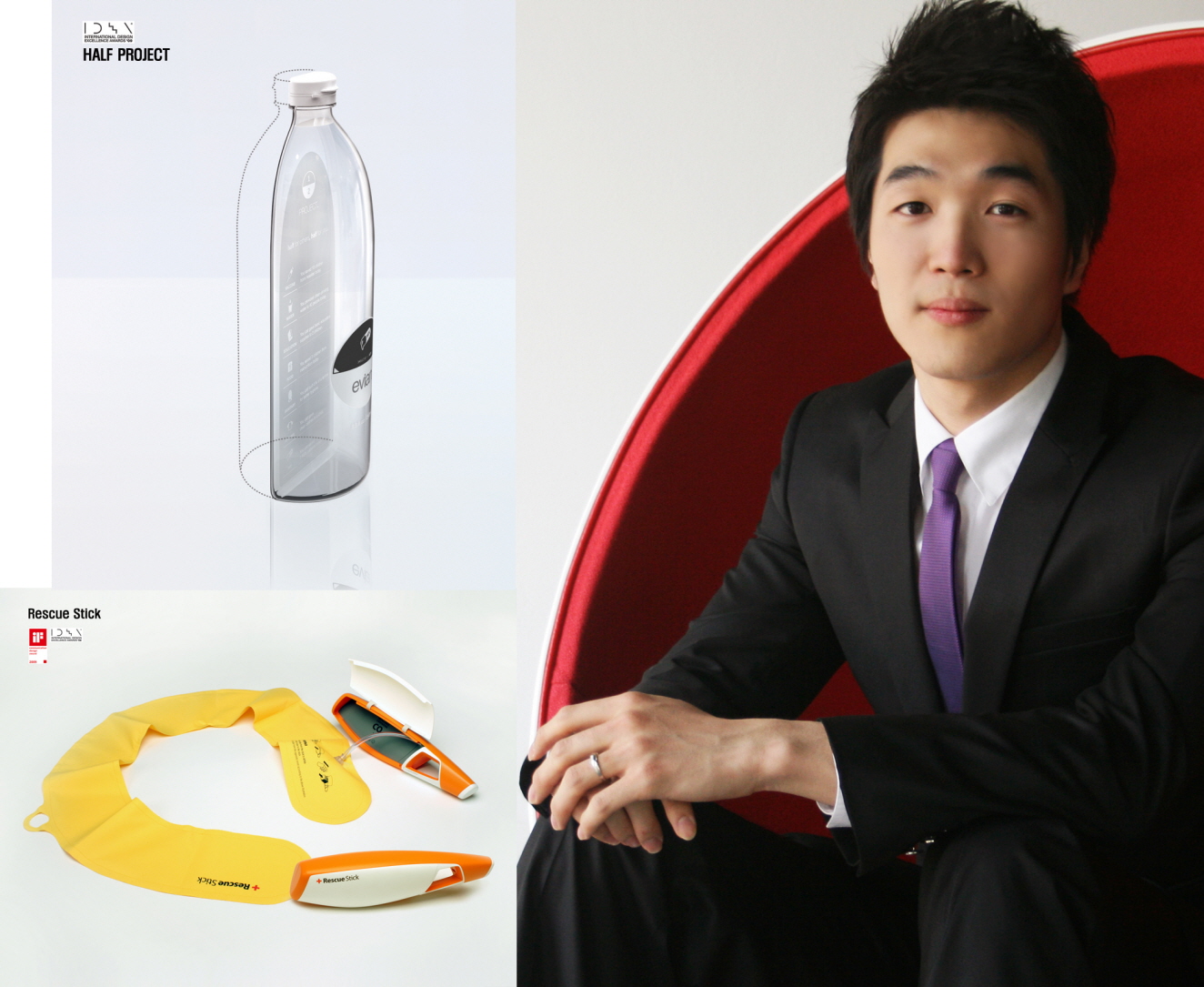 KAIST Senior Wins Prizes at International Design Contests
Sung-Joon Kim, a senior at the Department of Industrial Design, KAIST, has recently won the highest prize at the iF Communication Design Award held in Hanover, Germany, university officials said on Monday (June 3).
The prizewinning work entitled "1/2 PROJECT" introduces a donation system in which a customer buys a bottle of drink, for example, containing only a half of its price value and donate the remaining half of the value. The work which was created as part of the Samsung Design Membership was also awarded a silver prize at the International Design Excellence Awards (IDEA) of the United States.
Award ceremonies of the two prizes are scheduled for in Muenchen in August and in Miami in September, respectively.
"The design project is aimed at making donation a part of everyday life by teaming up with big-name beverage makers," said Kim.
iF Communication Design Award and the IDEA are among the world"s three leading international design competitions. The other one is the Red Dot Design Award presented in Essen, Germany.
Early this year, Kim, leading a team, presented a portable life saving equipment called "Rescue Stick" to the two competitions and won high honors.
2009.06.05 View 14698
KAIST Senior Wins Prizes at International Design Contests
Sung-Joon Kim, a senior at the Department of Industrial Design, KAIST, has recently won the highest prize at the iF Communication Design Award held in Hanover, Germany, university officials said on Monday (June 3).
The prizewinning work entitled "1/2 PROJECT" introduces a donation system in which a customer buys a bottle of drink, for example, containing only a half of its price value and donate the remaining half of the value. The work which was created as part of the Samsung Design Membership was also awarded a silver prize at the International Design Excellence Awards (IDEA) of the United States.
Award ceremonies of the two prizes are scheduled for in Muenchen in August and in Miami in September, respectively.
"The design project is aimed at making donation a part of everyday life by teaming up with big-name beverage makers," said Kim.
iF Communication Design Award and the IDEA are among the world"s three leading international design competitions. The other one is the Red Dot Design Award presented in Essen, Germany.
Early this year, Kim, leading a team, presented a portable life saving equipment called "Rescue Stick" to the two competitions and won high honors.
2009.06.05 View 14698 -
 Prof. Chung Appointed Chief Design Officer of Seoul City
Prof. Kyung-Won Chung of the Department of Industrial Design, KAIST, has been appointed as the new chief design officer of the Seoul Metropolitan City, university sources said on Tuesday (May 26).
Chung succeeded Prof, Young-Gull Kwon of Seoul National University who served as the inaugural head of the design division since 2007. The deputy-mayor level position has a two-year term.
With a vision to turn Seoul into a "global design hub," the Seoul city administration established the design division and initiated a slew of initiatives including design competitions aimed at improving the city"s looks.
Prof. Chung graduated from Seoul National University and its graduate school. Then, he earned a master"s degree from Syracuse University, New York, and a doctorate from Manchester Metropolitan University in Britain. Since February 2009, he has served as an executive of the newly-created Seoul Design Foundation. He also served as president of the Korea Institute of Design Promotion (KIDP) from February 2000 through May 2003.
2009.05.28 View 10149
Prof. Chung Appointed Chief Design Officer of Seoul City
Prof. Kyung-Won Chung of the Department of Industrial Design, KAIST, has been appointed as the new chief design officer of the Seoul Metropolitan City, university sources said on Tuesday (May 26).
Chung succeeded Prof, Young-Gull Kwon of Seoul National University who served as the inaugural head of the design division since 2007. The deputy-mayor level position has a two-year term.
With a vision to turn Seoul into a "global design hub," the Seoul city administration established the design division and initiated a slew of initiatives including design competitions aimed at improving the city"s looks.
Prof. Chung graduated from Seoul National University and its graduate school. Then, he earned a master"s degree from Syracuse University, New York, and a doctorate from Manchester Metropolitan University in Britain. Since February 2009, he has served as an executive of the newly-created Seoul Design Foundation. He also served as president of the Korea Institute of Design Promotion (KIDP) from February 2000 through May 2003.
2009.05.28 View 10149 -
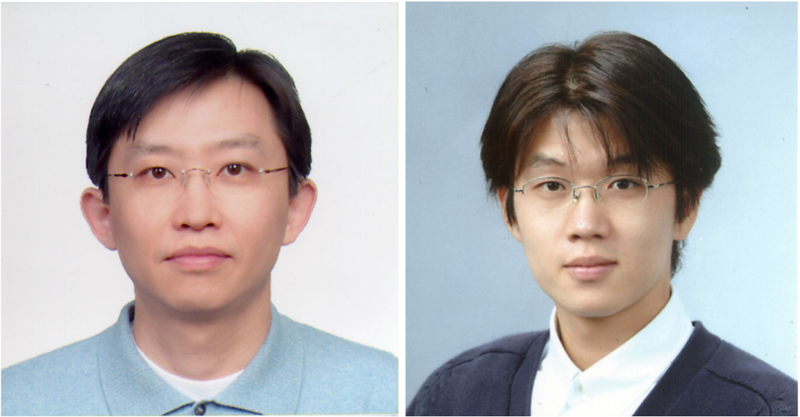 KAIST Professor Unveils New Method of Manufacturing Complex Nano-wire
A KAIST research team led by Prof. Sang-Ouk Kim of the Department of Materials Science and Engineering has discovered a new nanowire manufacturing method, university sources said on Monday (May 11).
The KAIST researchers successfully demonstrated soft graphoepitaxy of block copolymer assembly as a facile, scalable nanolithography for highly ordered sub-30-nm scale features. Graphoepitaxy is a new technique that uses artificial surface relief structure to induce crystallographic orientation in thin films.
Various morphologies of hierarchical block copolymer assembly were achieved by means of disposable topographic confinement of photoresist pattern. Unlike usual graphoepitaxy, soft graphoepitaxy generates the functional nanostrutures of metal and semiconductor nanowire arrays without any trace of structure-directing topographic pattern.
The discovery was featured in the May 7 edition of Nano-Letters. Application has been made for the domestic patent of the new method.
The new method is expected to be advantageous for multi-layer overlay processing required for complex device architecture, the sources said.
2009.05.12 View 11070
KAIST Professor Unveils New Method of Manufacturing Complex Nano-wire
A KAIST research team led by Prof. Sang-Ouk Kim of the Department of Materials Science and Engineering has discovered a new nanowire manufacturing method, university sources said on Monday (May 11).
The KAIST researchers successfully demonstrated soft graphoepitaxy of block copolymer assembly as a facile, scalable nanolithography for highly ordered sub-30-nm scale features. Graphoepitaxy is a new technique that uses artificial surface relief structure to induce crystallographic orientation in thin films.
Various morphologies of hierarchical block copolymer assembly were achieved by means of disposable topographic confinement of photoresist pattern. Unlike usual graphoepitaxy, soft graphoepitaxy generates the functional nanostrutures of metal and semiconductor nanowire arrays without any trace of structure-directing topographic pattern.
The discovery was featured in the May 7 edition of Nano-Letters. Application has been made for the domestic patent of the new method.
The new method is expected to be advantageous for multi-layer overlay processing required for complex device architecture, the sources said.
2009.05.12 View 11070 -
 Industrial Design Senior Wins Top Award at International Forum Design
Sung-Joon Kim, a senior at the Department of Industrial Design, KAIST, has won the highest award at the International Forum Design held in Hanover, Germany, university sources said on Monday (April 13).
At the design exhibition held in February under the theme of "life, live, work," Kim presented "Rescue Stick," a portable life saving equipment and "Recovery Arm Sling," a medical treatment device, in cooperation with three students from other Korean universities. Both entries were included among the 15 works selected as the top designs.
The design competition has been organized by iF International Forum Design, known as one of the world"s three leading design exhibitions.
Kim, leader of the team, received the prize at the awarding ceremony held in Nuremberg on March 24. The award-winning designs were on display at the design fair of the Altenpflege + Propflege, a nursing care exhibition, in the same city on March 24-26.
2009.04.15 View 12169
Industrial Design Senior Wins Top Award at International Forum Design
Sung-Joon Kim, a senior at the Department of Industrial Design, KAIST, has won the highest award at the International Forum Design held in Hanover, Germany, university sources said on Monday (April 13).
At the design exhibition held in February under the theme of "life, live, work," Kim presented "Rescue Stick," a portable life saving equipment and "Recovery Arm Sling," a medical treatment device, in cooperation with three students from other Korean universities. Both entries were included among the 15 works selected as the top designs.
The design competition has been organized by iF International Forum Design, known as one of the world"s three leading design exhibitions.
Kim, leader of the team, received the prize at the awarding ceremony held in Nuremberg on March 24. The award-winning designs were on display at the design fair of the Altenpflege + Propflege, a nursing care exhibition, in the same city on March 24-26.
2009.04.15 View 12169 -
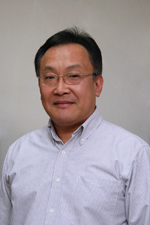 KAIST Prof. Park Selected as Winner of Clemson Award
Professor Tae-Gwan Park of the Department of Biological Sciences, KAIST, was chosen as the winner of the 2009 Clemson Award for Fundamental Research, university authorities said on Tuesday (April 7).
The award is the highest recognition of the Society for Biomaterials, an international organization of more than 3,000 members that promotes research in the field of biomaterials. Prof. Park is cited for his outstanding achievements in interdisciplinary research covering gene transferring, gene therapy and neogenesis. It is rare for a non-U.S. national to win the prize in the 36-year history of the award.
The award will be given to Professor Park at the Annual Meeting of the society which will be held in San Antonio, Texas, on April 22.
2009.04.09 View 12953
KAIST Prof. Park Selected as Winner of Clemson Award
Professor Tae-Gwan Park of the Department of Biological Sciences, KAIST, was chosen as the winner of the 2009 Clemson Award for Fundamental Research, university authorities said on Tuesday (April 7).
The award is the highest recognition of the Society for Biomaterials, an international organization of more than 3,000 members that promotes research in the field of biomaterials. Prof. Park is cited for his outstanding achievements in interdisciplinary research covering gene transferring, gene therapy and neogenesis. It is rare for a non-U.S. national to win the prize in the 36-year history of the award.
The award will be given to Professor Park at the Annual Meeting of the society which will be held in San Antonio, Texas, on April 22.
2009.04.09 View 12953 -
 KAIST Research Team Discovers Process for Rapid Growth of N-Doped CNT Arrays
A team of scientists led by Profs. Sang-Ouk Kim, Won-Jong Lee and Duck-Hyun Lee of the Department of Materials Science and Engineering has found a straightforward process for rapid growth of wall-number selected, nitrogen-doped carbon nanotube (CNT) arrays, university officials said on Monday (March 16).
KAIST researchers prepared highly uniform nanopatterned iron catalyst arrays by tilted deposition through block copolymer nanotemplates. This remarkably fast growth of highly uniform N-doped CNTs, whose material properties and chemical functionalizability are reinforced by N-doping, offers a new area of a large-scale nanofabrication, potentially useful for diverse nano-devices.
Carbon nanotubes (CNTs) are of broad technical interest in electronics, photonics, energy devices, and other applications. However, establishing a straightforward process for mass production of uniform CNTs with desired structure and properties has been a long-standing challenge.
In particular, it was strongly desired to precisely control the numbers of walls and diameter of CNTs, which are decisive parameters for the physical properties of CNTs. In this respect, the preparation of monodisperse catalyst array having a narrow size distribution is generally considered an effective pathway to produce well-defined CNTs, since the number of walls and diameter of the produced CNTs are closely related to the catalyst size.
The finding was featured in the March 13 edition of Nano Letters, a leading journal in the nano technology field.
2009.03.20 View 14438
KAIST Research Team Discovers Process for Rapid Growth of N-Doped CNT Arrays
A team of scientists led by Profs. Sang-Ouk Kim, Won-Jong Lee and Duck-Hyun Lee of the Department of Materials Science and Engineering has found a straightforward process for rapid growth of wall-number selected, nitrogen-doped carbon nanotube (CNT) arrays, university officials said on Monday (March 16).
KAIST researchers prepared highly uniform nanopatterned iron catalyst arrays by tilted deposition through block copolymer nanotemplates. This remarkably fast growth of highly uniform N-doped CNTs, whose material properties and chemical functionalizability are reinforced by N-doping, offers a new area of a large-scale nanofabrication, potentially useful for diverse nano-devices.
Carbon nanotubes (CNTs) are of broad technical interest in electronics, photonics, energy devices, and other applications. However, establishing a straightforward process for mass production of uniform CNTs with desired structure and properties has been a long-standing challenge.
In particular, it was strongly desired to precisely control the numbers of walls and diameter of CNTs, which are decisive parameters for the physical properties of CNTs. In this respect, the preparation of monodisperse catalyst array having a narrow size distribution is generally considered an effective pathway to produce well-defined CNTs, since the number of walls and diameter of the produced CNTs are closely related to the catalyst size.
The finding was featured in the March 13 edition of Nano Letters, a leading journal in the nano technology field.
2009.03.20 View 14438 -
 Workshop on Biomedical IC to Be Held on March 26
KAIST will hold a workshop on "biomedical IC for future healthcare system" on March 26 at a lecture room of the School of Electrical Engineering & Computer Science. The workshop is organized by SEECS and the Korean Institute of Next Generation Computing.
At the workshop, a variety of new technologies expected to expedite the development of biomedical systems will be presented. KAIST Prof. Hoi-Jun Yoo will speak on the "body channel communication" using the human body as the signal transmission medium and Dr. Seung-Hwan Kim of Electronics and Telecommunications Research Institute (ETRI) on a wearable vital sign monitoring system.
Other subjects are CMOS (complementary metal-oxide semiconductor) fully electronic biosensor for biomolecular detection to be presented by KAIST Prof. Gyu-Hyeong Cho; nerve interface and IC (integrated circuit) system design by KAIST Prof. Yoon-gi Nam; design of neural recording and stimulation IC using time-varying magnetic field by KAIST Prof. Seong-Hwan Cho; low power multi-core digital signal processor for hearing aid by Dong-Wook Kim, senior researcher at the Samsung Advanced Institute of Technology; and a non-contact cardiac sensor by KAIST Prof. Seung-Chul Hong.
With the advent of the ageing society, medical expenses of the elderly people are rapidly increasing. As a way to address the issue, interests are growing in "ubiquitous healthcare," a technology that uses a large number of environmental and patient sensors and actuators to monitor and improve patients’ physical and mental condition.
The upcoming workshop is the first academic event on biomedical integrated chips to be held in Korea. The workshop will provide a valuable opportunity for experts in biomedical area to get together and examine the present status of Korean biomedical area and discuss about its future, KAIST officials said.
2009.03.20 View 18653
Workshop on Biomedical IC to Be Held on March 26
KAIST will hold a workshop on "biomedical IC for future healthcare system" on March 26 at a lecture room of the School of Electrical Engineering & Computer Science. The workshop is organized by SEECS and the Korean Institute of Next Generation Computing.
At the workshop, a variety of new technologies expected to expedite the development of biomedical systems will be presented. KAIST Prof. Hoi-Jun Yoo will speak on the "body channel communication" using the human body as the signal transmission medium and Dr. Seung-Hwan Kim of Electronics and Telecommunications Research Institute (ETRI) on a wearable vital sign monitoring system.
Other subjects are CMOS (complementary metal-oxide semiconductor) fully electronic biosensor for biomolecular detection to be presented by KAIST Prof. Gyu-Hyeong Cho; nerve interface and IC (integrated circuit) system design by KAIST Prof. Yoon-gi Nam; design of neural recording and stimulation IC using time-varying magnetic field by KAIST Prof. Seong-Hwan Cho; low power multi-core digital signal processor for hearing aid by Dong-Wook Kim, senior researcher at the Samsung Advanced Institute of Technology; and a non-contact cardiac sensor by KAIST Prof. Seung-Chul Hong.
With the advent of the ageing society, medical expenses of the elderly people are rapidly increasing. As a way to address the issue, interests are growing in "ubiquitous healthcare," a technology that uses a large number of environmental and patient sensors and actuators to monitor and improve patients’ physical and mental condition.
The upcoming workshop is the first academic event on biomedical integrated chips to be held in Korea. The workshop will provide a valuable opportunity for experts in biomedical area to get together and examine the present status of Korean biomedical area and discuss about its future, KAIST officials said.
2009.03.20 View 18653